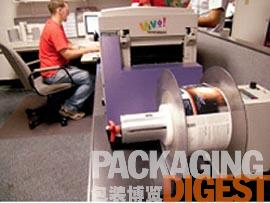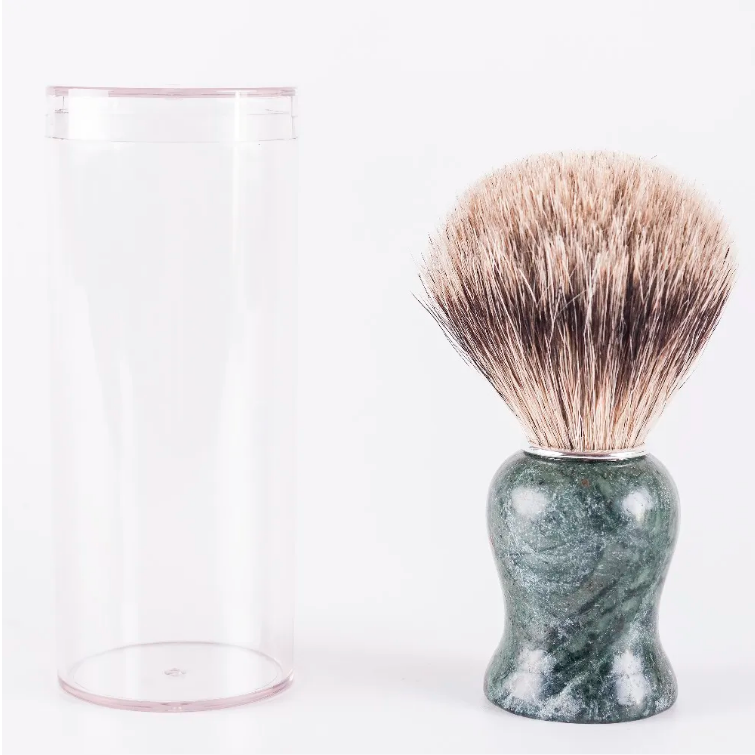Since the installation of a four-color digital label printer, Bridgepoint Systems, a carpet and upholstery cleaning service company, has saved 30 percent in packaging costs and has significantly improved customer response time and the quality of bottle labels.
In the early 1970s, it began as a temporary carpet cleaning business for three college brothers, Gordon, and Dave Hanks. Now it has grown into a full-service professional carpet, upholstery cleaning and restoration industry. National company for cleaning products and services. Bridgepoint Systems, headquartered in Salt Lake City, is proud of its top-notch resources in product, service, and training.
Scot Greeno, Director of Production, Procurement and Logistics at Bridgepoint, said, “Our mission is to provide comprehensive support to all of our customers, so we provide training, formulating and filling services for chemical products and equipment manufacturing. A series of measures such as rental and investment have also been launched in large-scale equipment and vehicles."
Eastern Shore Tea Co./Baltimore Coffee & Tea's annual savings after using two digital color printers from QuickLabel Systems exceeds $150,000.
In the formulation and production of chemical products, Bridgepoint manages hundreds of companies' own branded cleaning products and stocks that are made up of their own branded products. Greeno says these products are based on high quality ingredients and performance. Known.
Until recently, Bridgepoint had relied on external resources to provide pre-printed containers for its large array of small-order chemical products—a solution that is highly responsive to the company's market and design flexibility, as well as taking up a lot of warehouse space. Last March, the company installed a four-color digital label printer for internal printing from Astro-Med's QuickLabel(R) Systems product group to print photo-quality labels on demand at the production site.
After a less than satisfactory start-up phase, Bridgepoint has now incorporated carpets and interiors with the help of 60 independent distributors and 12 distributors under the name Hydro-Force in 12 internal stores and the Interlink Supply network. Upholstery cleaning products are sold to places from California to North Carolina. In a 50,000-square-foot “crowded†plant in Salt Lake City, Bridgepoint mixes and fills conventional chemicals. Only a few products are listed here, including carpet cleaners, soaps, professional stain removal sprays, and deodorants. Agents, restoratives, wood floor care products, ceramic tiles, and cement cleaners.
Although the size of the company's chemical product packaging ranges from pints to vats, most of the products sold are still packed in gallons, Greeno said. He estimated that Bridgepoint produces approximately 500,000 gallons per year in its production plant, filling 3,000 gallons of chemical products per day.

Bridgepoint's new printer is an electrostatic imaging printer that uses four photosensitive drums to directly print text, images, and barcodes sent from a computer in four primary colors.
Bridgepoin generally buys bottles of small-capacity products from screen printers, which are printed in two-color graphics provided by Bridgepoint's internal design team. One of the disadvantages of the use of preprinted bottles mentioned in Greeno is that enough time is required for each order to satisfy the screen printing prepress, screen making and printing processes. "Even if the costs associated with this process are hidden, this deficiency is real in the absence of the response time we can give to the customer and the product development team," he said.
Assume that the company received a one-day delivery time from the local supplier. This is undoubtedly an insurmountable standard bottle that must wait for two weeks before it can be produced, and a two-month bottle of its own brand. Obstacles. "It is very difficult to complete production on demand," Greeno said. “In terms of our production plan, it is very inflexible.†And, inevitably, he added that there will be a batch of chemical products that cannot meet the demand for the same number of bottles. The result is a container in the final stages of production. Too few or too many situations.
Another concern is the lack of shelf performance in two-color printed bottles at the retail stage. Due to the cost of screen printing, two-color is the color matching that Bridgepoint's image design department has to apply most. The result is that there are many texts and simple designs of industrial designs.
In March 2005, Bridgepoint began evaluating the options for using screen printing bottles. After deciding to use self-adhesive labels, the company quickly focused its attention on QuickLabel's thermal printing technology that meets its speed requirements (up to 3,000 labels per day), label size can be up to 18 inches long, and highly reliable. The only doubt they have is its resolution. However, at Bridgepoint's hesitation in its selection, QuickLabel introduced the first four-color, 600-dpi Vivo! printer with photo quality.
"In order to highlight the high quality images on our products, we need to produce high-resolution labels," Greeno said. “When the Vivo! printer was launched, we looked at some of the samples it produced. It was a shock to us.â€
The floor-standing Vivo! is an electrostatic imaging printer. The four drums print text, images, and bar codes directly from the computer in four primary colors at a speed of 2 inches per second. Although Bridgepoint's graphic design department uses its own label design software, the Vivo! printer uses the QuickLabel(R) print management package and the Vivo! Windows driver to upload images for the printer. These images are stored in the printer until needed. Will be called.
Because the Bridgepoint design team was free to use the four-color design in their mission, they innovated the labeling of Bridgepoint's 1 gallon chemical bottle. The new label is better for products by using consistent graphics that include brightly colored four-color images, as well as easy-to-read product dilution instructions, warnings, medical safety data sheets (MSDS) and barcodes in English and Spanish. Make a distinction. According to Greeno, since the application of the new label, reliability and color consistency have been solved.
The label material is a glossy, paper-based coated sheet provided by QuickLabel, which has been proven to be durable enough to withstand the effects of carpets and room cleaners, and repair cleaners during use. In addition, when in contact with the contents of the bottle, the label does not show a tendency to discolor or lose its tack.
Bridgepoint produces three sizes of labels for gallon and pint packaging and 8 to 12 ounce bottles - 5.75x18.75, 5x10, and 5.5x36.75 inches. Vivo! printers can accommodate standard labels from 3 to 8.1 inches wide. Full-bleed labels are 3 to 7.6 inches wide and 2 to 50 inches long.
One of the other advantages that the company has discovered from the new printer is that its production speed can fully meet the needs of the production cycle. Contrary to the delivery time of two to three months for customers to produce their own branded products, the company can now complete orders within two to three weeks, if necessary, even days. "In the private label area, this is a great competitive advantage," Greeno said. Bridgepoint can now produce true four-color samples in a very short time, such as one day, thereby increasing its sales opportunities.
With regard to the measurable cost, since Bridgepoint can now purchase the bottle at random, rather than repurchasing it from the screen printer, it can reduce the overall cost of the bottle including the tag by 30%.
Since the pre-printed bottle is no longer needed to store the space originally occupied by the 40 trays storing the bottle, the site problem is also solved.
Bridgepoint is also very pleased with the ease of use of Vivo! printers. Once the label design patterns are uploaded to the QuickLabel interface, they become part of the pull-down menu and are easily filled by technicians. When the technician receives an order for a task, the printer is set up by ensuring the cleanliness of the machine, loading the print modules and labels, and performing a trial print check register. Then enter the number of labels you want to print and click "Print". Green said, "It's that simple."
Since Vivo! will be able to recover costs in "a few months," Bridgepoint is very satisfied with the low-cost production, quality, and flexibility of the new printer. "Now, we can produce four-color labels on-demand at the same cost as two-color screen printing bottles," Greeno said. "Vivo! is perfect for us. It's a rugged, high-quality, affordable device. It's the best thing."
Source: Packaging Expo
Modern shave brushes are similar in appearance, composition and function to their centuries-old predecessors. Although a variety of different materials are still used to fashion shave brush handles, synthetic handles of nylon, urethane or plastic are the most common even with the most expensive shave brush manufacturers. Benefits of synthetic handles include a lesser chance of breakage and resistance to damage by moisture.
A shave brush's price is usually determined more by its bristle load than any other factor, except for brushes with very exotic handles. The most expensive brushes often use exotic materials in the handle. The bristles are fixed together into a knot that is installed into the handle. The best quality brushes are hand knotted. Badger and boar brushes are the most commonly found animals used for Shaving Brush fibers. Badger species include the Eurasian and the hog badger.

Badger brushes are often referred to as two band, or three band. Perhaps all badger hair fibers have three bands, but those used in the brushes conceal the lighter bottom band. Nonetheless, both types of bristle make desirable shaving brushes. Lower-quality brushes are often machine made and the bristles may be trimmed, resulting in sharp, prickly tips.
Best badger are brushes made with the finer and more pliable hairs from 20 - 25% of the badger's body. It is longer in length and lighter in color than 'pure' badger hair. A 'best' badger brush is more densely filled with hair than the 'pure' badger brush and will produce a correspondingly greater lather. However, some wet shavers argue that the variance between the quality of a 'pure' and a 'best' badger brush is negligible. Best badger and better quality brush hairs are often fit so that the ends do not have to be cut to shape.
Synthetic shave brushes, most often made using nylon bristles, are available in a range of prices and gradations in quality. Comparable to traditional shaving brushes, synthetic fiber brushes can quickly create a rich lather using relatively little shaving soap or cream. The synthetic fibers dry faster than natural hair and are less sensitive to everyday use.
Nylon Hair Shaving Brush,Shaving Brush Head,Beard Shaving Brush,Acrylic Shaving Brush Head
SAMINA FORAM (SHENZHEN) CO., LIMITED. , https://www.saminabrush.com
